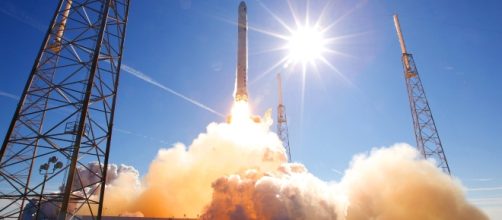Elon Musk's commercial spaceflight company SpaceX successfully launched three rockets from their launch pad in the last 12 days. The rockets brought different payloads into space. The historic launches were completed in SpaceX Complex 39A launch pad inside NASA's Kennedy Space Center, the same launch pad used by Apollo missions.
Rocket launches
The last of the successful liftoff occurred at 7:38 pm (EDT) on July 5, 2017. The SpaceX rocket was carrying the Intelsat 35e satellite. It was brought to the geostationary transfer orbit. The satellite will be positioned at its permanent orbit at 22,300 miles (35,800 kilometers) above the planet.
SpaceX had already manifested its expertise in relaunching reused rockets as early as last year. Elon Musk believes that in order to cut the cost of space flights, it is vital to learn to reuse rockets. This is the reason why SpaceX engineers spent many hours studying booster landing both on solid ground and on drone ships at sea. There were failed attempts but the commercial space flight company managed to learn the trick in order to pull off their latest feat - launching Falcon 9 rockets three times within 12 days.
Falcon 9 rocket booster
However, for the July 5 rocket launch, SpaceX did not attempt to land or recover the booster since the satellite payload was heavier than usual and will take more fuel to reach its destination compared to the typical rocket launch.
This means the rocket booster does not have enough fuel to maneuver a landing back on Earth.
The last launch carried the Intelsat 35e satellite to space, which will be used for broadband communications in the Caribbean. According to SpaceX, the satellite will also provide services for the government in the region and the African continent.
It is part of the Intelsat EpicNG innovative and next-gen satellites that will be launch to space.
Before the launch on July 5, SpaceX also sent two Falcon 9 rockets to space. The first one was on June 23, with the rocket carrying a Bulgarian communications satellite using a reused rocket booster. While the second one was completed last June 25, which sent 10 communications satellites into orbit.
The launches were sent from different launch pads, the Complex 39A launch pad at Kennedy Space Center and the Vandenberg Air Force Base in California.
Last year temporary ban
Last year, the company suffered from an accident when a rocket exploded while being refueled. The rocket was supposed to carry a Facebook satellite into space. This resulted in a temporary ban in SpaceX liftoffs that then incurred backlogs of rocket launches. Nevertheless, with the rate of SpaceX rocket launches, it seems like they will be able to keep up with the demand if they continue to launch several rockets with very short waiting time.


